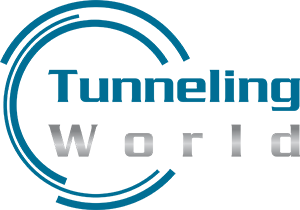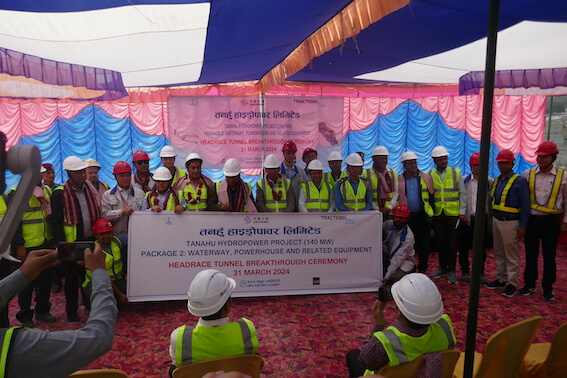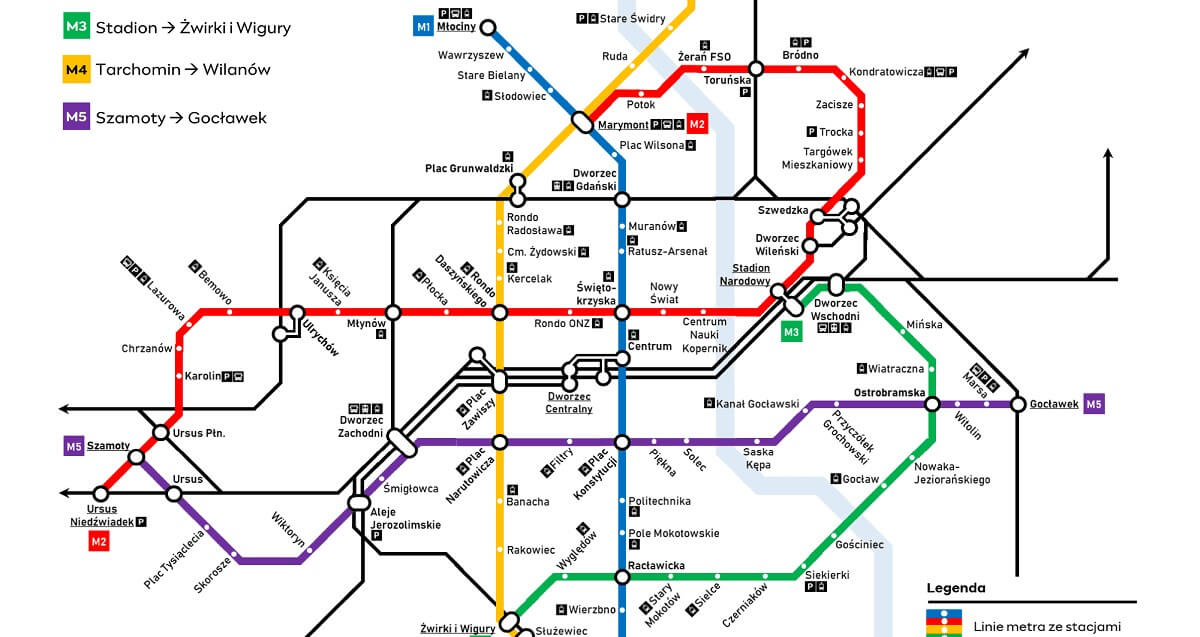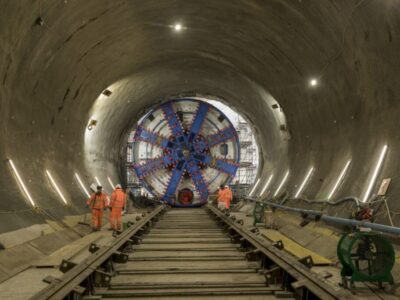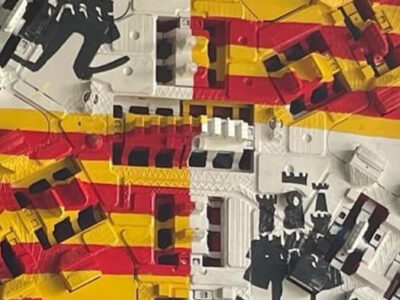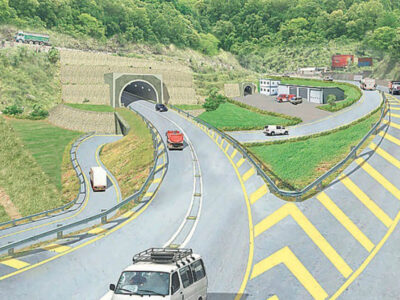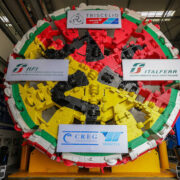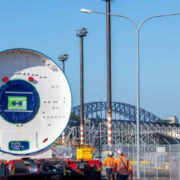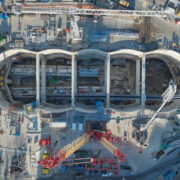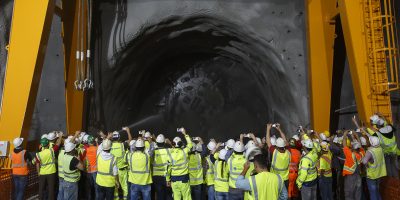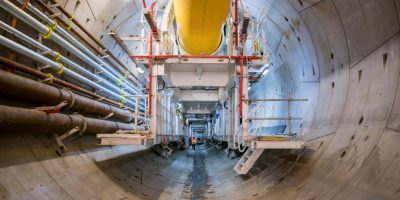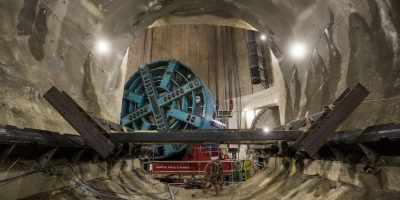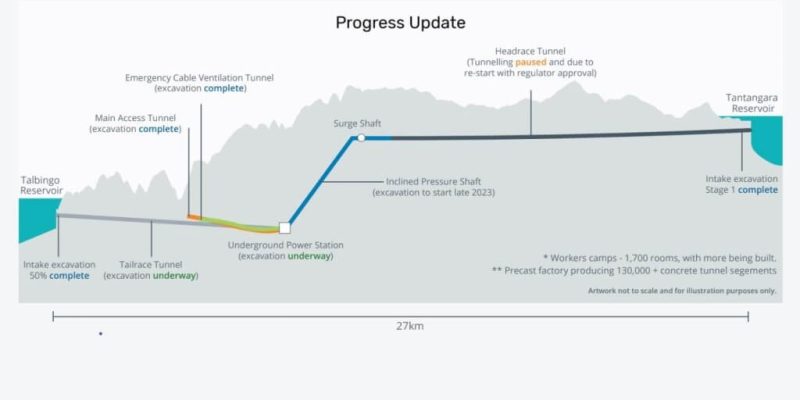
A geotechnical report has said that future tunneling operations on Australia’s troubled Snowy 2.0 hydro scheme could be hit by additional faults and poor ground conditions, as the cost of the project climbs to £6bn (A$12bn).
The report was submitted to the New South Wales Government by project promoter Snowy Hydro as part of an application to gain approval to fix a surface depression and carry out ground consolidation works at the scheme’s Tantangara dam work site in New South Wales.
The hydroelectricity complex is being constructed by the Future Generation Joint Venture (FGJV), comprising Webuild, Australian firm Clough – which has sold its assets and project share to Webuild – and an American subsidiary of Webuild called Lane Construction.
Tunneling has been on pause at the Tantangara site since December last year when the 9m deep surface depression emerged in the ground above tunnel boring machine (TBM) Florence.
The TBM that is excavating the headrace tunnel is one of three being used on the project to expand the Snowy Mountains Hydroelectric Scheme.
According to a document submitted for the recent application, the surface depression is a result of the TBM tunneling through incohesive sandy material and forming an inferred chimney structure above the TBM cutting head.
“The material that the TBM encountered was not expected based on the results of previous geotechnical investigations undertaken for Snowy 2.0,” the document added.
Remediation work will involve filling and rehabilitating the area around the surface depression. Planning approval for the work is needed because the site is just outside the approved construction area.
But even if the work at the Tantangara site goes ahead, the scheme could face further ground condition challenges down the road, a geotechnical report carried out by FGJV and submitted with the application has noted.
It said that: “Additional faults and poor ground conditions cannot be ruled out in future TBM excavation activities along the tunnel alignments.”
It listed two locations along the Tantangara headrace tunnel, as well as the gate shaft and the Tantangara intake, as other areas with potential poor ground conditions.
The warning comes just days after it was announced that the total cost to deliver the Snowy 2.0 project has jumped to A$12bn (£6bn), with A$4.6bn already spent on the project by June of this year.
The total represents a significant jump from the project’s previous price tag of A$5.1bn (£2.9bn), although Australian energy industry figures had previously speculated that this figure did not account for the project’s all-up cost.
Snowy Hydro said that the new cost revision was made in response to several challenges, including design immaturity at final investment decision, with several design elements requiring more time to complete due to their technically complex nature. As such, the final design is now more expensive to construct.
The variable site and geological conditions have also had an impact, with the most impactful being the soft ground encountered that is delaying TBM Florence’s progress at Tantangara.
Snowy Hydro revealed the new cost as it announced the outcomes of a major reset process for the project and a revised timeline for its delivery.
The new target date for commercial operations for all units at the hydro power scheme is December 2028, with the first power to be delivered in the second half of 2027.
Snowy Hydro is also finalizing an amendment to its existing engineering, procurement, and construction (EPC) contract with FGJV. It has stated that the original contract is no longer fit for purpose.
The client and contractor will now move to an incentivized target cost contract model. Snowy Hydro will also settle all outstanding claims with FGJV.
Construction of Snowy 2.0 is now approximately 40% complete, with excavation finished on the main access and emergency cable and ventilation tunnels which equated to 6km of tunneling.
TBM Florence will soon resume excavation of the headrace tunnel, subject to the receipt of necessary regulatory approvals.
